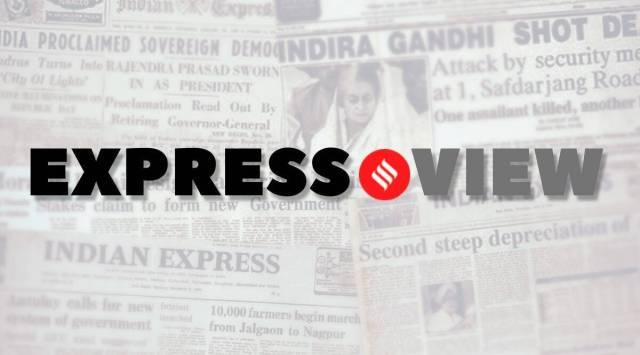Opinion Express View on US Fed rates: A hawkish pause
The projections accompanying the Fed meeting show that the committee members see interest rates rising from the current range of 5-5.25 per cent — the median projection for the federal funds rate is 5.6 per cent in 2023.
 Even as the Fed chose to hold rates, the European Central Bank, on Thursday, hiked interest rates by 25 basis points to 3.5 per cent. (Express Photo)
Even as the Fed chose to hold rates, the European Central Bank, on Thursday, hiked interest rates by 25 basis points to 3.5 per cent. (Express Photo) In line with expectations, the US Federal Reserve, on Wednesday, chose to keep interest rates unchanged. The pause, which comes after 10 consecutive rate hikes, allows the Fed to assess the impact of its actions so far. However, this is a hawkish pause, and does not signal an end to the rate hike cycle.
The projections accompanying the Fed meeting show that the committee members see interest rates rising from the current range of 5-5.25 per cent — the median projection for the federal funds rate is 5.6 per cent in 2023. This points towards the possibility of two more rate hikes this year. In fact, three members see interest rates moving even higher. This rules out the possibility of rate cuts this year.
The expectations of higher rates are a response to a slower decline in inflation and an economy that has fared better than expected. While the committee members have now marginally lowered their expectations of inflation (the index of personal consumption expenditures), core inflation is expected to be higher at 3.9 per cent in 2023, up from the earlier estimate of 3.6 per cent. Inflation is now expected to ease towards the Fed’s target over the next few years — declining to 2.5 per cent in 2024 and 2.1 per cent in 2025. The committee members only expect interest rate cuts in 2024.
Even as the Fed chose to hold rates, the European Central Bank, on Thursday, hiked interest rates by 25 basis points to 3.5 per cent. As price pressures remain across the Euro region — inflation stood at 6.1 per cent in May — ECB president Christine Lagarde indicated that more hikes were coming as the central bank continued its efforts to bring inflation under control. Central banks in countries such as Australia and Canada have also raised rates recently after some had paused earlier. Others like the Bank of England are likely to follow suit, indicating that the process of bringing inflation in line with their targets is proving to be a long drawn out one.
But even as central banks in developed economies are likely to continue to tighten policy, the macroeconomic scenario is different in India. In its last meeting, the monetary policy committee had maintained the status quo on rates as inflation continues to trend lower. However, the central bank’s own projections show inflation moving up in the months ahead. As growth comes under pressure, there are expectations of rate cuts early next year.






